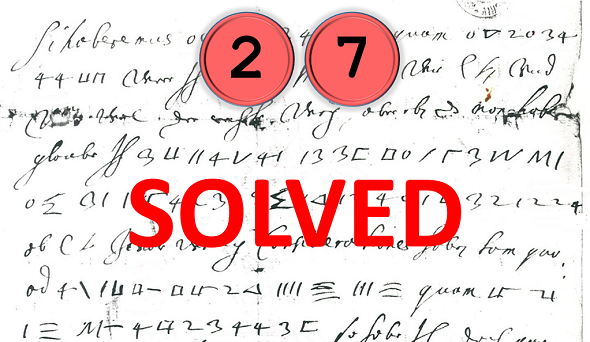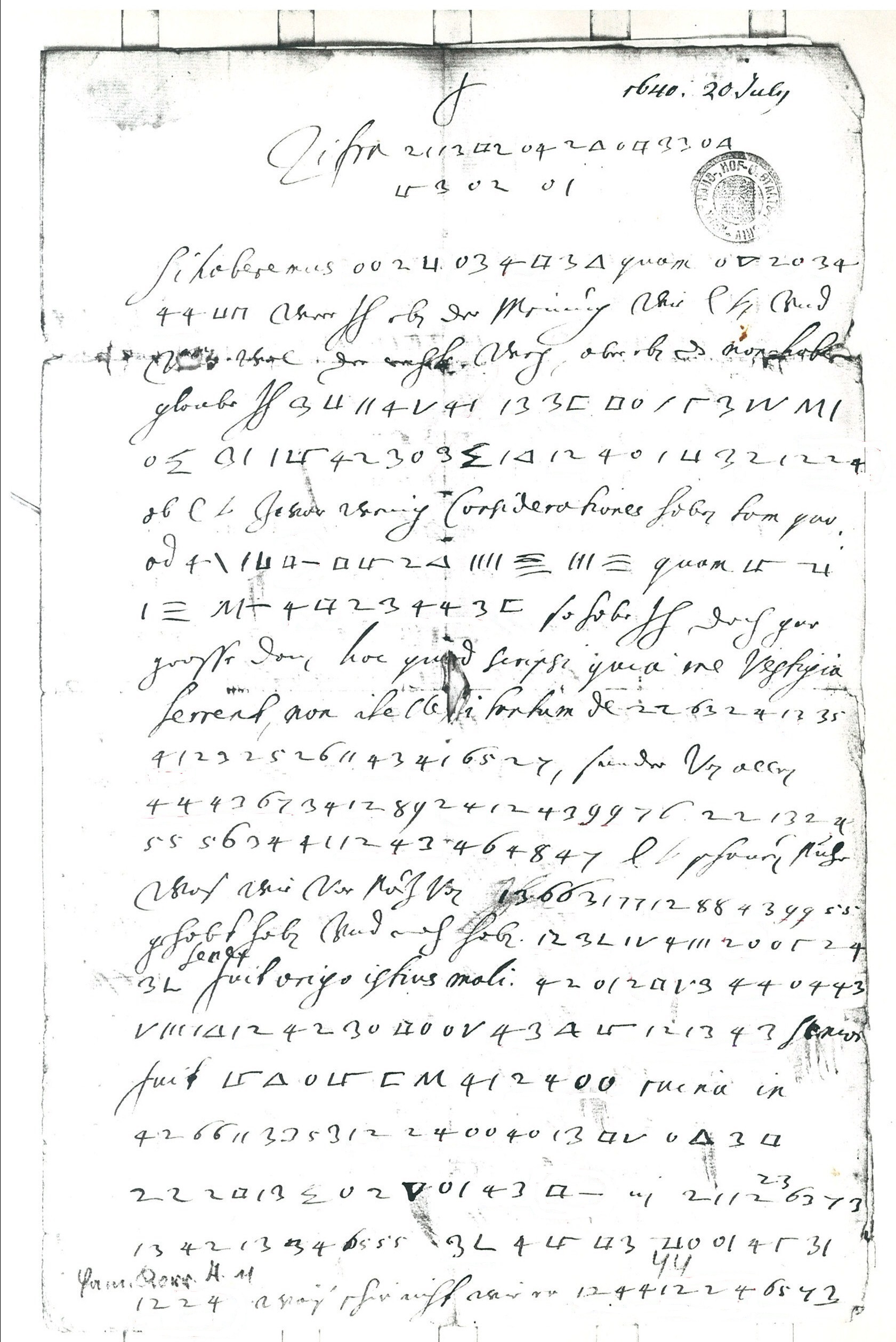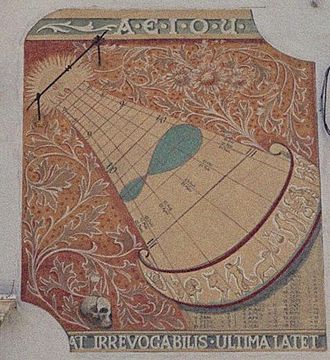A few weeks ago I introduced two unsolved encrypted letters from the Thirty Years’ War. Scientist and blog reader Thomas Ernst has deciphered them now.
Emperor Ferdinand III (1608-1657) from the house of Habsburg played an important role in the Thirty Years’ War. When researching his life, historians repeatedly encountered encrypted letters. The code consists of numbers and simple geometric symbols arranged in pairs.
In 2014 Prof. Leopold Auer from Vienna told me about these letters. The encrypted passages could not be read. I blogged about these letters and asked my readers to break the code, but to no avail.
Ferdinand’s cipher
In July 2017 I wrote about Ferdinand’s encrypted letters again – as a part of my top 50 unsolved cryptograms series. This time, Prof. Dr. Thomas Ernst, a German scientist who teaches in the USA and is a very active reader of this blog, tried his luck on this mystery. Ernst made a name for himself in the 1990s when he broke the 500-year-old encryption of Johannes Trithemius (1462-1516) in the third book of his Steganographia. This story is covered in my new book Versteckte Botschaften.
In contrast to most other codebreakers, who usually have a computer or engineering background, Ernst is a philologist and historian. He made himself familiar with the world of Ferdinand III very quickly. He also easily learned to read the emperor’s unencrypted letter passages, after the handwriting of Ferdinand III and his use of several languages had created difficulties for many other scholars.
How the cipher was broken
While examining the cipher, Ernst wrote his thoughts as comments below my blog article. Altogether, he posted over 50 comments before the mystery finally was solved. These comments give a fascinating insight into the breaking of a 17th century cipher by a very skilled deciphering expert.
Ernst tested several hypotheses. As an important discovery, he found out that each non-numerical sign represents the number of its lines or semi-circles. For example, four lines stand for the number 4. In one of his many comments Ernst wrote: “From the very beginning, I didn’t like the auxiliary substitution of these signs into letters, as presented early in this thread. It gave me so many false starts! Two days ago, I looked at the signs themselves – again. And there it was, the ‘Eureka-moment’, the same sensation I felt a quarter of a century ago when the numbers of Trithemius’ ‘liber tertius’ unveiled themselves in the flash of a moment. These are good moments: rare, but good!”
As all non-numerical signs could now be replaced, from now on Ernst had to deal with number pairs only. Based on frequency analysis and probable words, he tried to guess some of the cleartext letters. Another break-through occured when he realised that the Habsburg motto AEIOU played a role in the cipher. AEIOU inscriptions (one out of many interpretations is Austria erit in orbe ultima) can today still be found on some Habsburg buildings, as can be seen on the following picture.
Ernst realised that in Ferdinand’s cipher 01/02 stands for A, 02/12 for E, 03/13 for I, and 04/14 for O – this was derived from the AEIOU motto. When he looked at the phrase “Zifra 21 13 42 04 23 04 33 03 43 02 01” at the start of the letter, he identified the following vowels: “Zifra – I – O – O – I – E A”. The word spelled out here could only be PIC[C]OLOMINEA. As Ernst knew, Piccolomini is the name of a family Ferdinand corresponded with (Piccolominea is the corresponding adjective).







Kommentare (1)